Articles
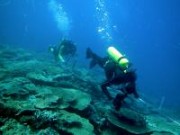
The AIMS Long-Term Monitoring Program (LTMP), initiated in 1993, was designed to track changes in populations of key groups of organisms, particularly crown-of-thorns starfish, corals and reef fishes, on appropriate spatial scales over the length and breadth of the Great Barrier Reef World Heritage Area (GBRWHA).
The specific objectives of the LTMP are:
- To monitor the status and changes in distribution and abundance of reef biota on a large scale.
- To provide environmental managers with a context for assessing impacts of human activities within the GBR Marine Park and with a basis for managing the GBR for ecologically sustainable use.
- To examine the effects of rezoning the GBR Marine Park on biodiversity.
This report (Status Report no. 8) presents a synthesis of LTMP and RAP data collected up to the 2007 field season. Results from 2006 and 2007 have not previously been reported.

The aims of this work (MTSRF Project 1.1.3b) were to identify the role of light and water temperature as drivers of change in seagrass meadows of the northern Great Barrier Reef. Experimental approaches as well as field investigations were undertaken.
The goal of this project (MTSRF Project 2.5i.4) was to develop quantitative modeling tools that help to explain the risks posed to the linked GBR social-ecological system due to the effects of climate change.

One of the key ways to ensure the sustainability of a tourism destination is to measure and build its competitiveness. Success is achieved when the destination is able to achieve the highest level of well-being for its residents on a sustainable basis (Ritchie and Crouch 2000). Destinations that do not evaluate themselves and their competitors will often encounter difficulties in the long run as markets change and the demand for destination goods and services evolves under the influence of technology and changing consumer preferences.
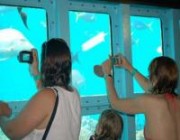
This annual report forms part of a series of reports presented by James Cook University on reef tourism in the Great Barrier Reef. It is part of a research program being conducted under the Australian Government’s Marine and Tropical Sciences Research Facility (MTSRF). The research described here falls under MTSRF’s research program to identify sustainable use and management of marine resources of the Great Barrier Reef and specifically the analysis of tourism use and impact on the Great Barrier Reef for managing sustainable tourism.

As one of Australia’s iconic tourism attractions and one of the seven natural wonders of the world, the Great Barrier Reef (GBR) is an important economic, social and natural resource for Queensland’s Tropical North. However, the long-term prognosis for the health of the reef and by implication, the industries dependent on it, is not positive. So far much attention has focussed on the health and resilience of the reef ecosystem, as a foundation for a resilient tourism industry.

Marketed internationally as an iconic tourism experience, Australia’s Great Barrier Reef (GBR) faces a range of issues similar to those faced by coral reefs in other parts of the world. According to the Great Barrier Reef Marine Park Authority (GRBMPA), the management body responsible for the reef, 1.9 million tourists visit the reef annually, using marine tour operators that offer a wide range of tour products. Management of the tourism industry is based on a zoning system that requires natural and social science input.
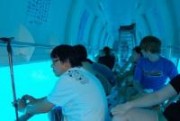
Marine wildlife tourism has become one of the fastest growing tourism sectors. In the context of the Great Barrier Reef, it focuses on five types of activities: (i) “swim-with” programs, (ii) surface watching activities (whales and dolphins); (iii) diving (corals, sharks, etc), (iv) reef snorkeling trips and (v) glass bottom boat tours. It is proposed that management, product design and experience, and outcome will be different for each of these and not all findings within marine wildlife tourism are transferable between tourism types.

Photography is an important element of the tourist experience and provides both a method of later reliving the experiences of the journey as well as sharing elements of the journey with others. In the digital age photography has taken on a new dimension with the ability of people to enhance images as well as share them with others via new media such as social network sites and blogs. This paper reports on research undertaken in to photography on the Great Barrier Reef and finds that respondents rate the need for good photographic images as a high priority.

Of the five World Heritage sites in Queensland, two are located in Tropical North Queensland and provide the region with its key iconic experiences. However, not all tourists visit these sites. This paper seeks to identify the reasons why a significant number of tourists do not visit these sites. Based on a survey of departing domestic and international visitors at Cairns domestic airport throughout 2007, this study identifies the visitor segment who do not visit the region’s major natural attractions.
This research incorporated field and experimental work on benthic foraminifera as indicators for water quality in the Great Barrier Reef (GBR). Firstly, distribution of benthic foraminifera was examined on 20 reefs in four regions of the GBR (Princess Charlotte Bay, Wet Tropics, Whitsunday Area, and Mid/Outer-shelf reefs), and along a water quality (WQ) gradient in the Whitsunday region. Secondly, manipulative laboratory experiments were carried out to determine whether the distribution of symbiont-bearing foraminifera is controlled by light levels or other environmental factors.
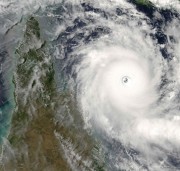
Tropical storms (cyclones, hurricanes or typhoons) are the most severe form of mechanical disturbance of coral reefs. In 2005, the severe Tropical Cyclone Ingrid crossed the Far Northern Great Barrier Reef. This storm provided a unique opportunity to improve understanding of the extent and type of damage inflicted on inshore and offshore coral reefs along a gradient of wind speeds. Surveys of 82 sites on 32 reefs along the wind gradient showed that the types and intensity of disturbance were well explained by local maximum wind speed, and by spatial and biotic factors. While offshore reefs had the deepest depth of damage, inshore reefs had the greatest rates of coral breakage and dislodgement. On a severely affected inshore reef, hard coral cover decreased about 8-fold, taxonomic richness decreased 2.5-fold, the density of coral recruits decreased by 30%, while massive coral cover remained unaltered. Maximum winds <28 cm s-1 for <12 hours inflicted only minor damage on any reef, but winds >33 m s-1 and >40 m s-1 caused catastrophic damage on inshore and offshore reefs, respectively. Observations from this cyclone were used to predict potential changes in storm-related coral loss at a scenario of altered cyclone intensity.
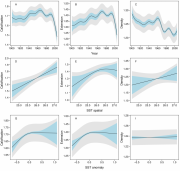
Reef-building corals are under increasing physiological stress from a changing climate and ocean absorption of increasing atmospheric CO2. We investigated 328 colonies of massive Porites corals from 69 reefs of the Great Barrier Reef (GBR). Their skeletal records show that throughout the GBR, calcification has declined by 14.2% since 1990, predominantly due to extension declining by 13.3%. The data suggest such a severe and sudden decline in calcification is unprecedented in at least the last 400 years. Calcification increases linearly with increasing large-scale sea surface temperature, but responds non-linearly to annual temperature anomalies. The causes for the decline remain unknown, however this study suggests that increasing temperature stress and declining seawater aragonite saturation state may be diminishing the ability of GBR corals to deposit calcium carbonate.
Most marine invasive species have been introduced to Australian waters unintentionally through shipping activities and mariculture.

Dugongs (Dugong dugon) are marine mammals, which are commonly known as sea cows. Australia is home to most of the world’s dugongs. They live in northern waters between Shark Bay in Western Australia and Moreton Bay in Queensland. One of the reasons for nominating the Great Barrier Reef as a World Heritage Area in 1981 was its importance as a feeding ground for large populations of dugongs.
Tropical northern Australian waters are home to a number of harmful jellyfish, including the large multi-tentacled deadly box jellyfish Chironex fleckeri and several species of smaller jellyfish known to cause the debilitating Irukandji syndrome.
Coral reef fish are caught by hook and line along the length of the Great Barrier Reef from the Torres Strait south to Fraser Island. More than 120 fish species are caught in the commercial line fishery, although only a few of them are actively targeted by commercial fishers. The high-value target species include coral trout, red throat emperor, red emperor, tropical snapper and Spanish mackerel.
Recreational anglers also target these species, particularly highly prized trophy species such as Spanish mackerel, red emperor and coral trout.
Research on the biology of fish species and the impacts of fishing is helping managers balance the needs of users while maintaining reef fish stocks and the reef ecosystem for future generations.
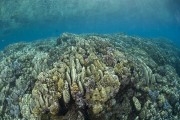
Identifying the principal spatial patterns in biodiversity of corals is a requirement for effective ecosystem management. This article summarises large-scale patterns in hard coral biodiversity on the GBR.
The study is based on one-off surveys of 599 sites on 118 inshore reefs and 17 mid-and outer-shelf reefs along 1300 km of Australia’s Great Barrier Reef (GBR) (Fig. 1), conducted between 1994 and 2001. More details are found in Devantier et al. (2006).

Water quality (WQ) is an important determinant of ecosystem health in the Great Barrier Reef (GBR). This articles summarise some of the main spatial patterns and seasonal changes in water quality. The information is based on two Reports, Death (2007), and De’ath and Fabricius (2008).
The main findings are:
(1) Space-time models are poor predictors of WQ parameters. Between 0% and 40% of the variation in WQ parameters is typically predictable, with chlorophyll and suspended solids being well predicted and dissolved forms of nitrogen being very poorly predicted.
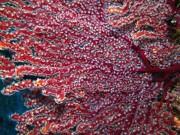
Soft corals, sea fans and gorgonians are common names for a group with the scientific name Octocorallia or Alcyonacea. About 100 genera in 23 families are known to occur in shallow Indo-Pacific coral reefs. Octocorals are ecologically important components of the coral reef landscape, and being beautiful and colourful, are an attraction for divers.



